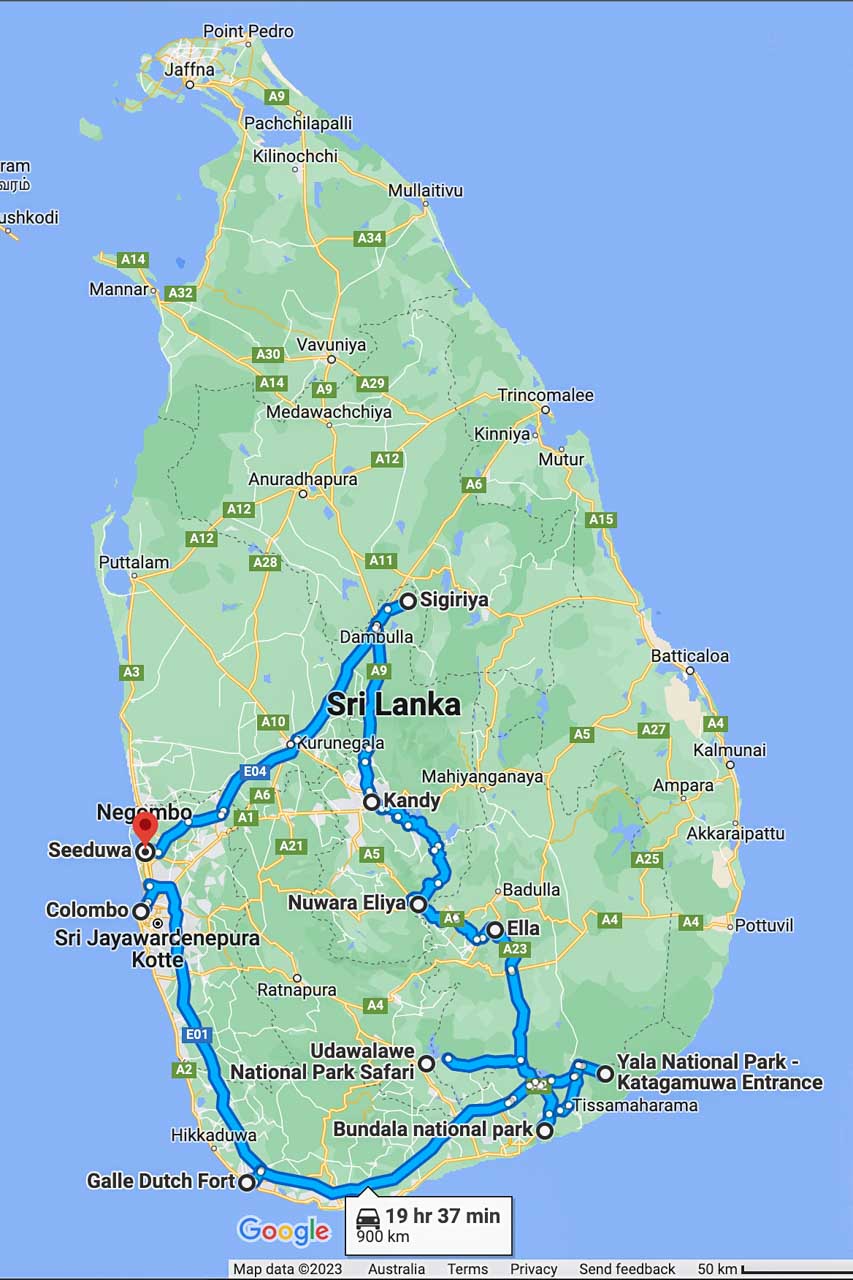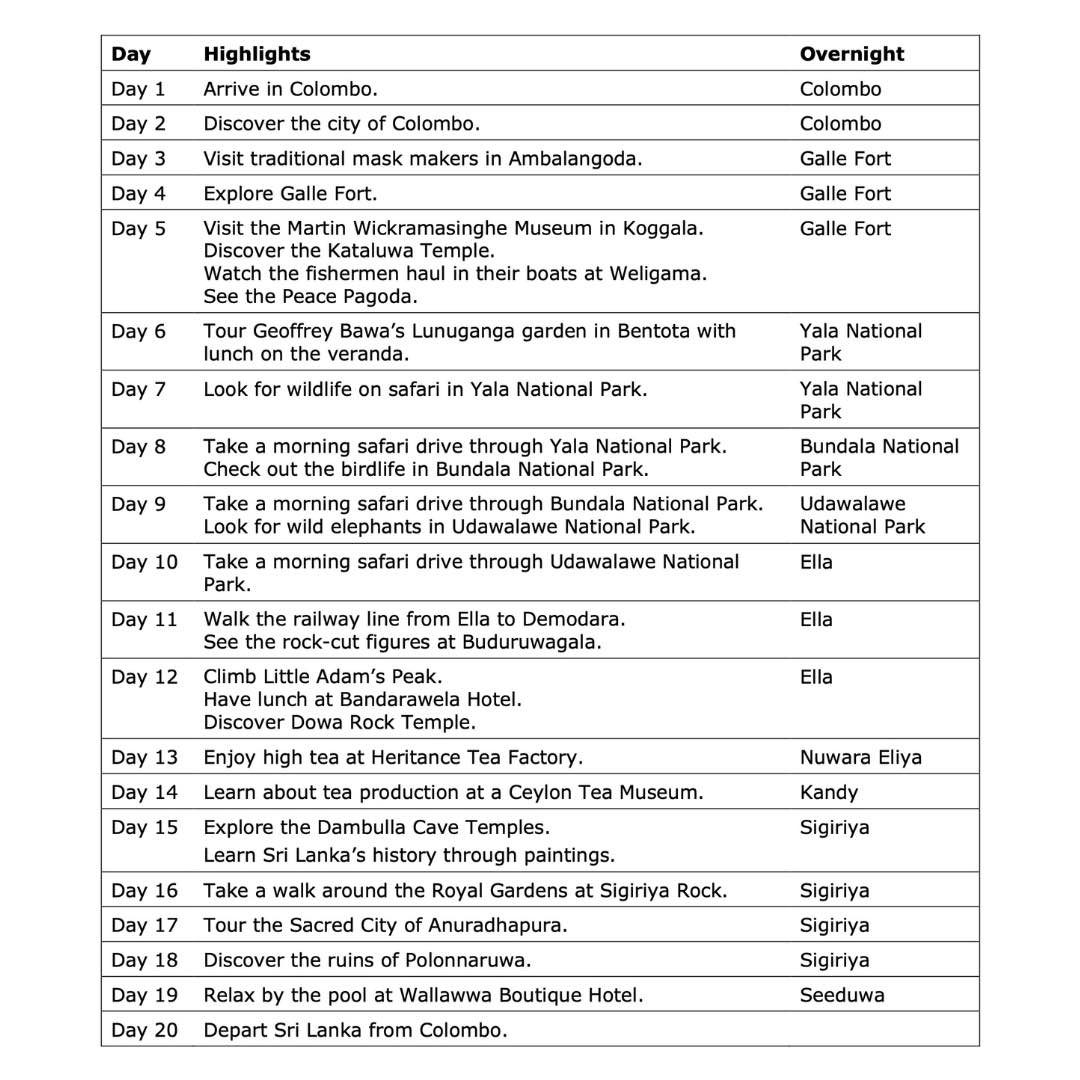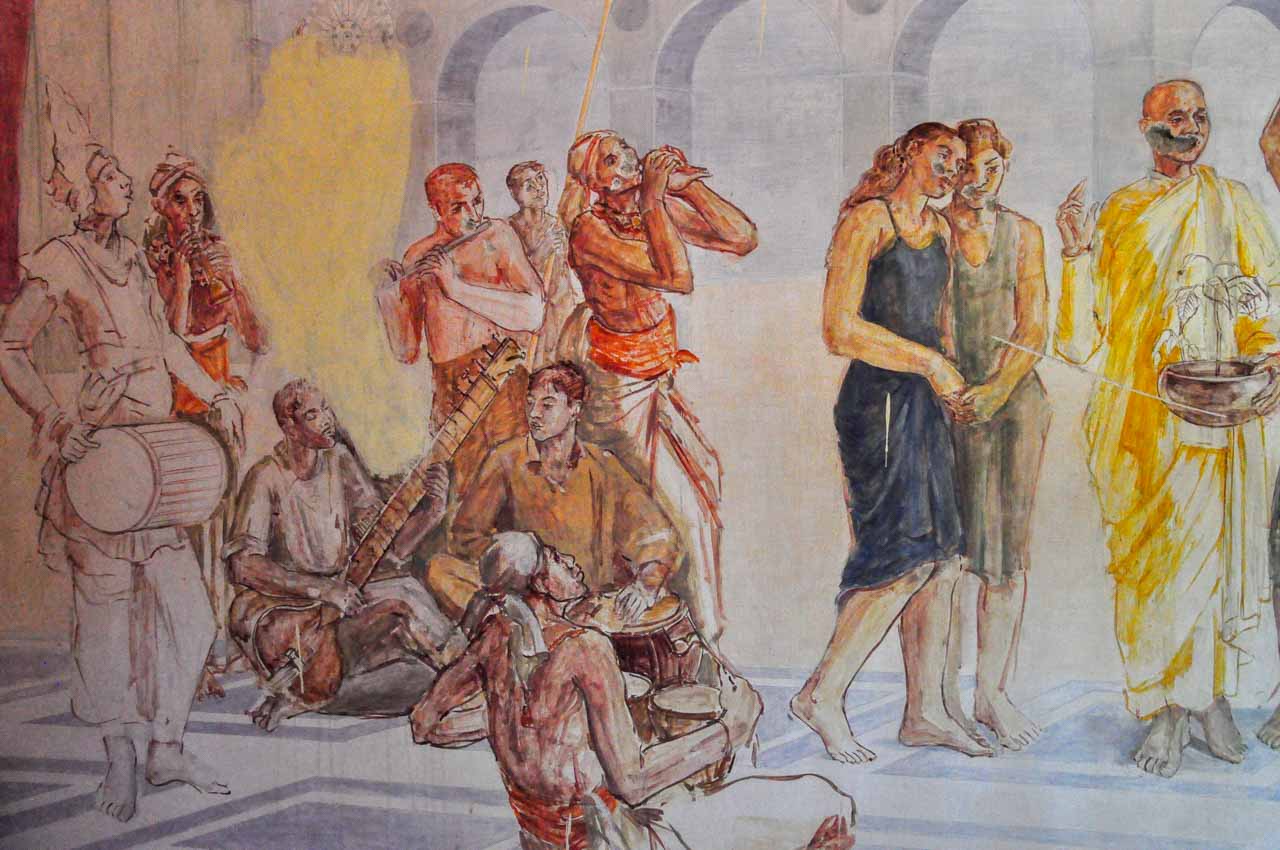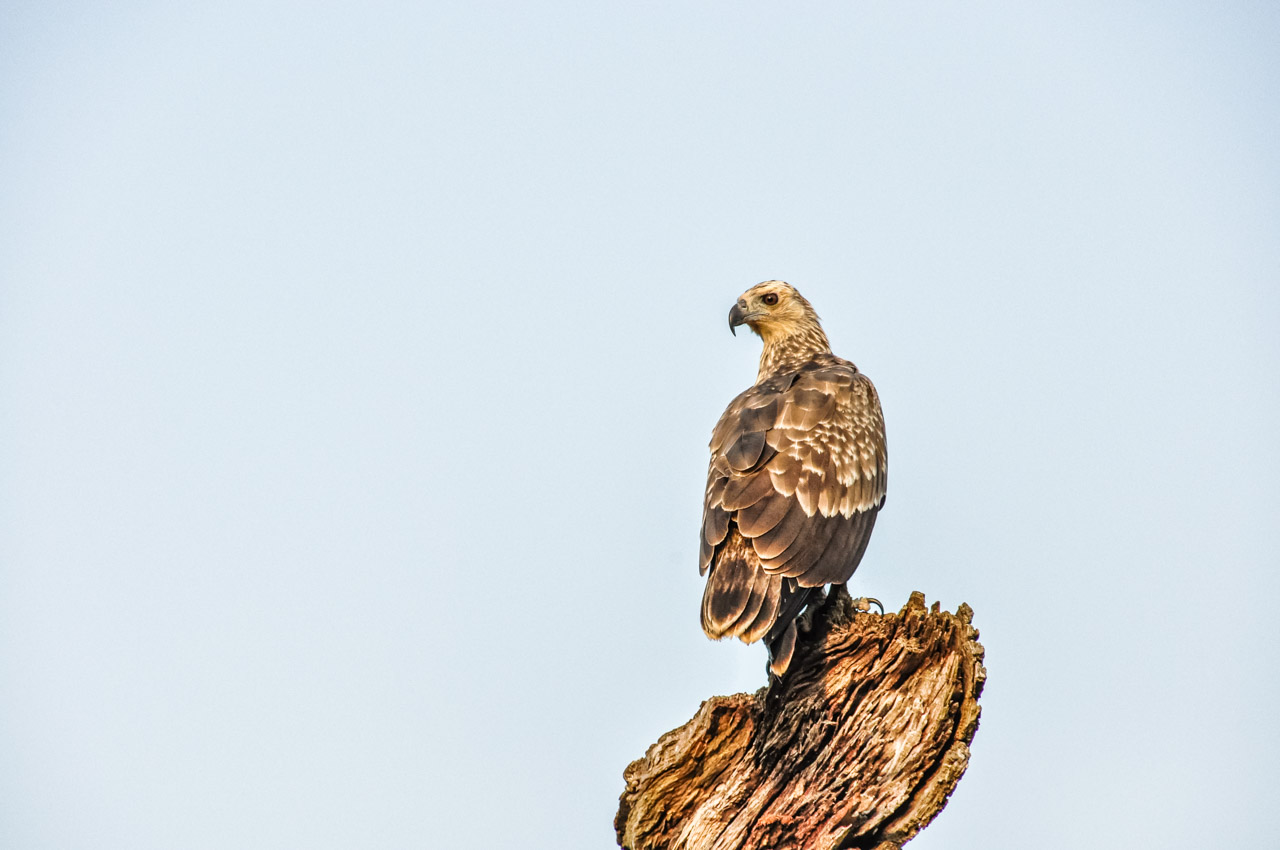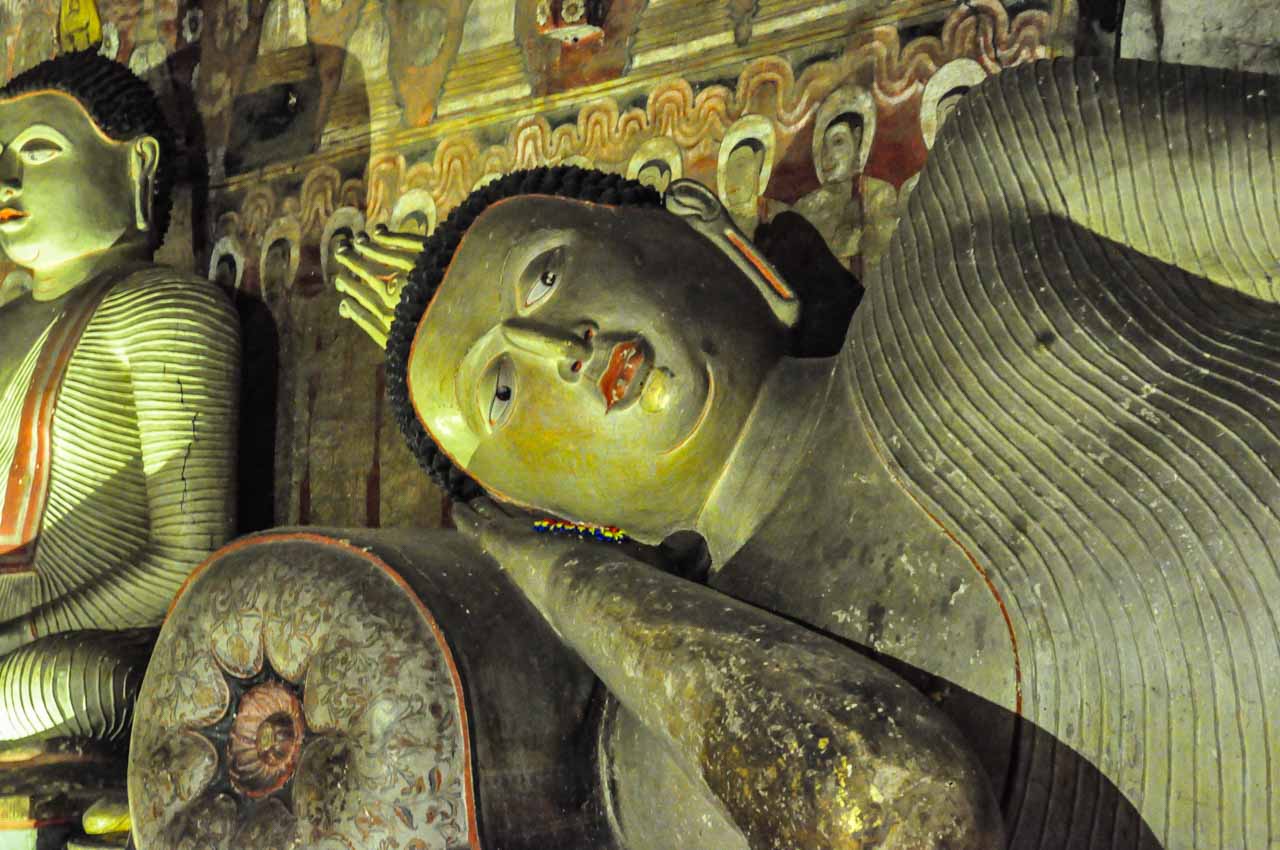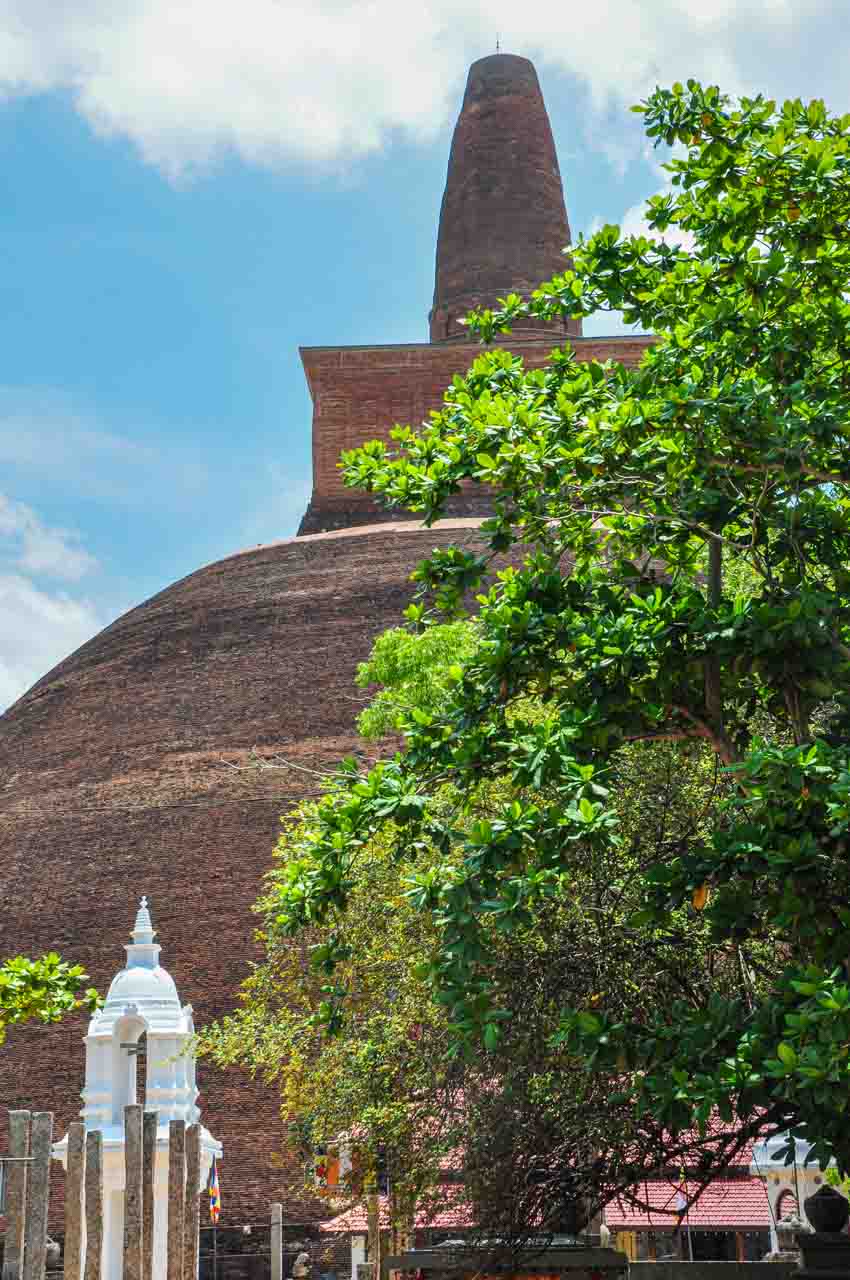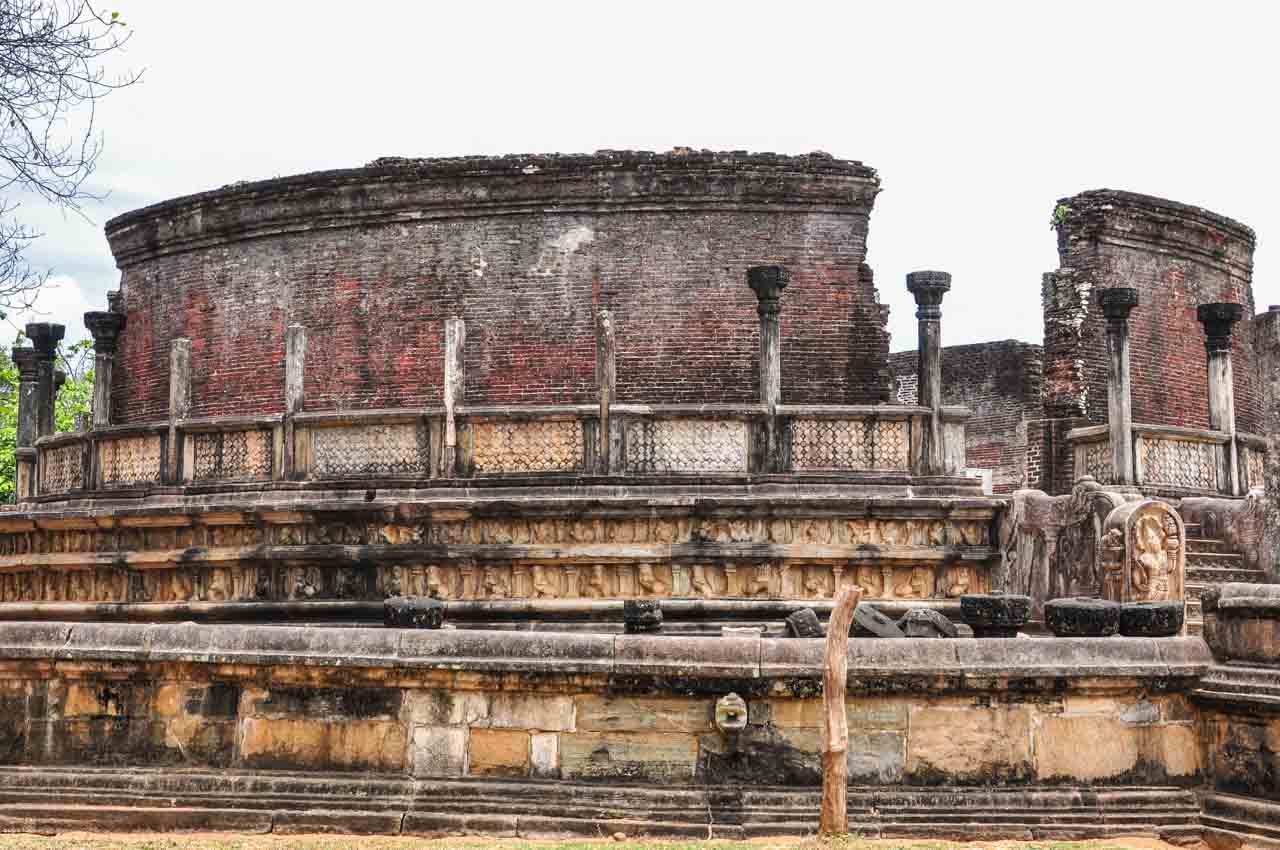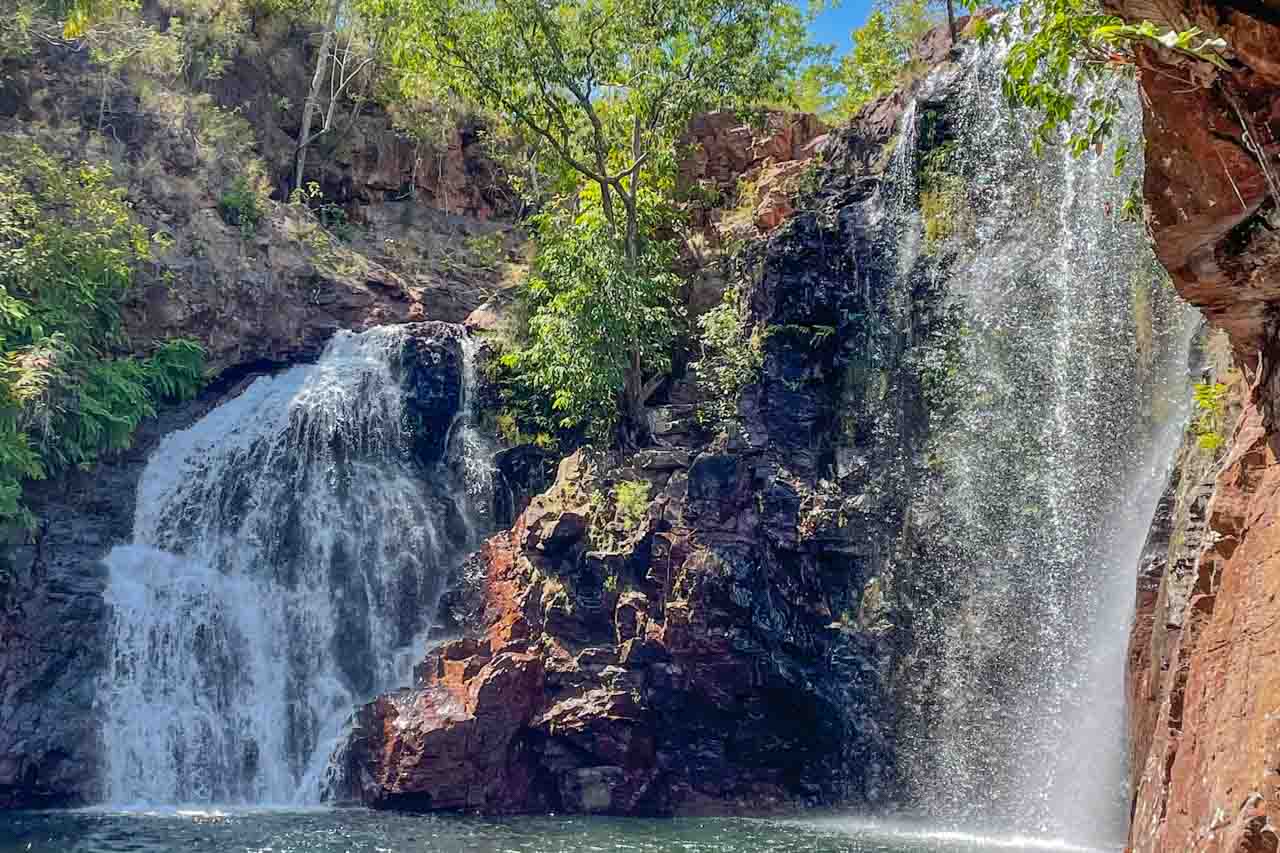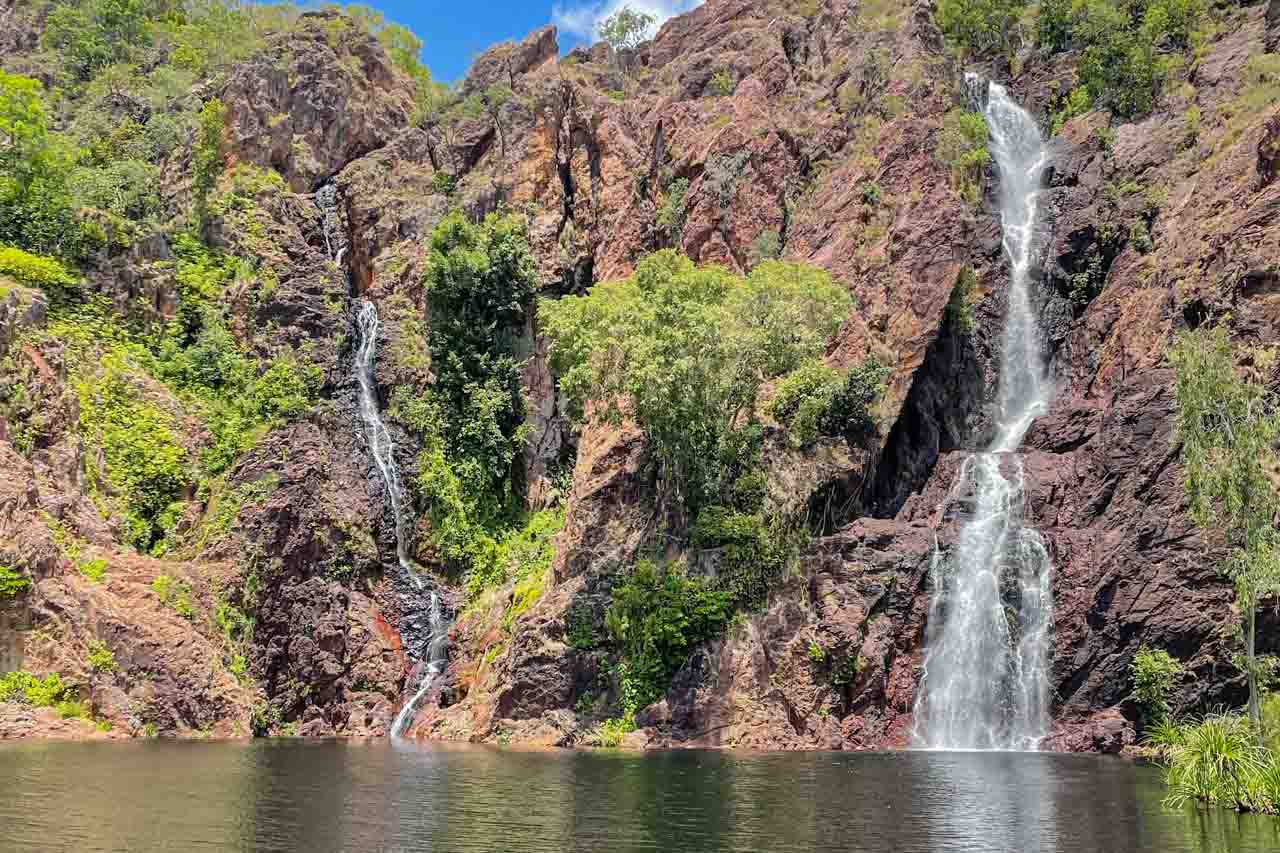Use This Comprehensive Trip Planner To Create Your Sri Lanka Itinerary. Sri Lanka is a land where history and culture are inseparable, with breathtaking landscapes from the beaches to…
Use This Comprehensive Trip Planner To Create Your Sri Lanka Itinerary.
Sri Lanka is a land where history and culture are inseparable, with breathtaking landscapes from the beaches to the hills and wildlife said to rival Africa. Discover the best sights and things to do in Sri Lanka with my comprehensive 20-day travel itinerary. Encounter the wildlife found in its national parks and wetlands, discover the natural beauty of the Hill Country, explore six UNESCO World Heritage Sites, wander through untamed gardens, and so much more.
About Sri Lanka
The Democratic Socialist Republic of Sri Lanka – Sri Lanka for short, and formerly called Ceylon – is that teardrop-shaped nation lying at the bottom of India in the Indian Ocean and is often referred to as the Pearl of the Indian Ocean.
For a small country, Sri Lanka packs a mighty punch for the traveller with a fantastic combination of diverse landscapes, pristine beaches, ancient culture, historical and religious temples and buildings, and unique experiences.
“Within a mere area of 65,610 kilometers lie 8 UNESCO World Heritage Sites, 1,330 kilometers of coastline – much of it pristine beaches – 15 national parks showcasing an abundance of wildlife, nearly 500,000 acres of lush tea estates, 250 acres of botanical gardens, 350 waterfalls, 25,000 water bodies, to a culture that extends back to over 2,500 years.”
Sri Lanka offers something for every type of traveller, no matter what your desired adventure or experience. There is no shortage of things to do in Sri Lanka.
Sri Lanka has a long history of colonisation by the Portuguese, Dutch, and British. These external influences have left their mark on Sri Lanka, building a country with many ethnic groups, languages, and religions. Buddhism is the main religion of Sri Lanka (70.2% of the population), followed by Hinduism (12.6% of the population). Muslims (9.7%) and Christians (7.4%) comprise the last two major religious groups.
Overview
I toured Sri Lanka in 2017 with my sister and brother-in-law. Our 20 days in Sri Lanka were on a private tour, with a customised itinerary we developed in conjunction with Insider Journeys, an Australian-based specialist tour operator. Coordinating it all was our travel consultant at Helloworld Travel Professionals in Albury.
Insider Journeys organised our accommodation, vehicle and driver-guide, and additional guides, such as the Naturalist in Bundala National Park.
In Sri Lanka, you must pay for the driver-guide’s accommodation on a private tour.
Much of what we did and saw resulted from our pre-tour research when developing our itinerary. Once in Sri Lanka, we included additional activities based on further research and suggestions from our driver-guide.
Note: From here on in, for convenience and reading ease, I will refer to our driver-guide simply as our guide.
Our itinerary covered Sri Lanka’s Hill Country, Cultural Triangle, UNESCO World Heritage Sites, national parks, magnificent gardens (formal and wild), and beautiful coastlines.
Twenty days in Sri Lanka gave us a comprehensive tour at a relaxed pace.
Detailed Sri Lanka trip itinerary
The itinerary starts with an international flight into Colombo, Sri Lanka’s capital city, and ends with the flight home (Australia) from Colombo.
The itinerary focuses on our personalised trip and is written from my perspective as I experienced it. While based on having a private guide for the duration of the journey, the itinerary is adaptable and works just as well for travellers using trains, buses, and taxis, which are available throughout Sri Lanka.
As well as being there for us on pre-determined trips, excursions, and activities, our vehicle and guide were also available for 80 kilometres per day for anything else we wanted to include at the last minute.
The reviews of the hotels listed in this itinerary are my opinions as written in 2017. If I was to stay at the hotels today, my thoughts might be different.
Sri Lanka is one of those countries where foreigners pay a higher entrance fee to sites and museums than that paid by Sri Lankan residents.
Day 1: Arrive in Colombo
Day 1 was purely an arrival day for us. Our flight arrived in Colombo just before midnight.
Our guide met us at the airport and drove us to our accommodation, where we stayed for the next two nights – Galle Face Hotel (see review, Day 2).
Day 2: Colombo
- Discover the city of Colombo
Colombo is a new capital city, having only been Sri Lanka’s capital since 1815. It is a dynamic city with a multicultural community encompassing the past, present, and future. Colombo is known for being one of the best places in Sri Lanka to splurge in fashionable boutiques, sample a wide range of cuisines, and enjoy its vibrant nightlife.
Our day began after a leisurely breakfast, with our guide taking us on a one-hour orientation drive around Colombo. Returning to the hotel, we left our guide for the day and immediately headed out again to explore Colombo in more detail on foot. Colombo is flat and easy to walk around, but the heat and humidity can be tiring. We covered two districts: the historic Fort district, where modern office blocks rub shoulders with Colonial-era buildings, and the Pettah, the bustling bazaar district and home to Jami Ul-Alfar Mosque.
We let our feet provide the direction, starting at our hotel, which fronted onto Galle Face Green, past Old Parliament Building and Old Colombo Lighthouse in Fort, and into the Pettah, where shops are organised in a bazaar-style layout, with each street dedicated to a particular trade. On Sea Street, you will find gold jewellery shops.
The bustling Pettah district is a chaotic, vibrant melting pot of different ethnicities and religions. Jami Ul-Alfar Mosque opened in 1909 and is known locally as the Red Mosque due to its distinctive red and white exterior. Located on Second Cross Street in Pettah, it is one of the oldest mosques in Colombo and a popular tourist attraction. Non-Muslims are allowed in the mosque, and women may also enter to look around, but you must cover your hair, arms, and legs.
Old Colombo Lighthouse (featured in the photo above) is a clock tower and was a lighthouse. Initially built as a clock tower in 1860, the lighthouse was added in 1865. The lighthouse was deactivated in 1952. However, it is a functioning clock tower and is the only lighthouse in the world that doubles as a clock tower.
The modern Hilton Hotel forms a backdrop for the neo-baroque-styled Old Parliament Building, which houses the offices of Sri Lanka’s President.
In the early evening, stroll along Galle Face Green to view the sunset over the Laccadive Sea and mingle with the locals. Galle Face Green is a large grassy area with the Indian Ocean on one side and the busy Galle Face Centre Road on the other, and a promenade stretching along the ocean side. Laid out in 1859 by the then governor of British Ceylon for horse racing, nowadays, it is a gathering place for locals to meet, eat, fly kites, stroll along the promenade, and just enjoy themselves when the heat of the day has faded.
Where we stayed
Galle Face Hotel > 2 Galle Road, Colombo 3
Galle Face Hotel is colonial grace and luxury. Situated right on the seafront and bordering Galle Face Green, the hotel is a lovely old colonial building, beautifully restored with an aura of elegance. It has well-appointed, comfortable rooms, and the service was excellent. Buffet-style breakfast and lunch on the long wide veranda were enjoyable and relaxing. I recommend a hopper for breakfast, and you can’t go past the chocolate croissants.
Hoppers are traditional Sri Lankan food and are generally served at breakfast. They are typically bowl-shaped pancakes made from fermented rice flour and coconut milk filled with egg, vegetables, curry, or whatever your tastebuds desire. They are delicious.
Day 3: Colombo to Galle
- Visit traditional mask makers in Ambalangoda (83 kilometres south of Colombo).
The drive from Colombo to Galle, where we stayed the next three nights, took about four hours. We took the coast road rather than the expressway because we wanted to stop in Ambalangoda to visit the traditional mask makers, Ariyapala & Sons, whose museum, showroom, and workshop came recommended by Insight Guides Sri Lanka:
“The town of Ambalangoda … is most famous as the centre of the island’s mask carvers … Two mask museums stand opposite one another at the northern end of town. The larger and more interesting of the two is the Ariyapala and Sons Mask Museum.”
Travelling the coast road was a pretty drive as it hugged the coast, passing through village after village. According to our guide, a much more interesting route than the expressway.
The Ariyapala & Sons Mask Museum provides an insight into the history of masks in Sri Lanka and their role in storytelling and medicine. Traditionally, the masks, made from balsa wood, were used in Kolan dances performing folk stories and exorcism ceremonies to frighten off evil deities (bad spirits). The Sanni masks, of which there are 18, are distorted and disturbing. These masks are used in exorcism rituals, each representing a disease or ailment caused by yakkas (devils), such as vomiting, insanity, nightmares, and stomach diseases. Unfortunately, these traditions are being lost to modernisation.
Connected to the museum is the workshop where you can watch several artisans carving and painting masks. Above the museum is the showroom, where you can buy every mask imaginable at reasonable prices.
Ariyapala & Sons Mask Museum > 426 Main Street, Ambalangoda
Open 9.30 am to 5.00 pm daily.
Entrance to the museum is free.
Leaving the mask museum, we completed our journey to Galle – the most important town on Sri Lanka’s south coast. Galle comprises the old Dutch quarter – enclosed within the Fort – and the sprawling New Town outside the Fort’s walls. We stayed inside Galle Fort, which is a UNESCO World Heritage Site.
Where we stayed
Fort Bazaar > 26 Church Street, Galle Fort
You can read my review of Fort Bazaar in my blog post on 24 Hours in Galle Fort.
Day 4: Galle
- Explore Galle Fort
The Portuguese built Galle Fort in 1589. In 1640, the Dutch seized the Fort and extended its fortifications, which survive to this day. The British modified the Fort after Galle was handed over to them in 1796. The fortifications run for three kilometres, and the walls are over one metre thick.
Galle Fort is small (0.52 kilometres square), relatively flat, and easy to walk around. We spent the morning and early afternoon on a self-guided walk around Galle Fort. Walking around the Fort is an excellent way to take in the many sites of interest Galle Fort has to offer.
The Fort’s bastions allow views of the lighthouse, clock tower, mosque, and main gate, and you pass many wonderful colonial buildings and cafes. Our walk took longer than the 90 minutes suggested by guidebooks because we walked at a leisurely pace so we wouldn’t miss anything, and we kept stopping to take photos on our way around.
Rather than spell out the route here and all that we saw and did, I recommend you read my blog post on 24 Hours in Galle Fort. In the post, you will find the following:
- Why you should visit Galle Fort;
- How to get from Colombo to Galle Fort and our experience of how scary driving in Sri Lanka can be;
- A detailed tourist map of Galle Fort highlighting places of interest;
- A detailed description, with photos, of the route we took on our self-guided walk around Galle Fort;
- A review of Fort Bazaar, where we stayed for three nights in Galle Fort;
- Reviews of where we ate in Galle Fort; and
- Information on the weather we experienced and its impact on me and our camera equipment.
Day 5: Galle
- Visit the Martin Wickramasinghe Museum in Koggala (16 kilometres from Galle Fort).
- Discover the Kataluwa Temple in Ahangama (2.7 kilometres from MW Museum).
- Watch the fishermen haul in their boats at Weligama (Weligama is 13 kilometres from Kataluwa Temple).
- See the Peace Pagoda (25 kilometres from Weligama on the way back to Galle Fort).
With Galle as your base, spend the day exploring outside the walls of Galle Fort along Sri Lanka’s south coast to discover places and sites off the beaten path. Our route was a round trip of 65 kilometres over five hours.
Our first stop was the Martin Wickramasinghe Museum in Koggala, 16 kilometres from Galle Fort – an excellent museum that sees few tourists.
Martin Wickramasinghe (1890 to 1976) was one of Sri Lanka’s greatest authors and intellectuals. The central theme of his writings was that of the culture and life of the people of Sri Lanka. His books are still required reading for Sri Lankan school children.
Set in seven acres of gardens in the small town of Koggala, the Martin Wickramasinghe complex comprises the Folk Museum and the home where Martin was born and grew up. Part of his home is over 200 years old and survived being destroyed by the army in the Second World War because a female Royal Airforce officer fell in love with it and decided to live in it. Martin’s home was not handed back to the Wickramasinghe family until after Martin’s death, and Martin’s ashes are buried next to the house.
The Folk Museum, which opened in 1981, is a repository of artefacts depicting the history of Sri Lankan folk culture from ancient to modern times. The museum is home to a fantastic collection of masks and puppets. In the gardens, you will find exhibitions of traditional modes of transport.
I recommend you take a guided tour, finishing in the museum shop where you can buy books by Martin Wickramasinghe.
Martin Wickramasinghe House and Folk Museum > Matara Road, Koggala
Open 9.00 am to 5.00 pm daily.
The ticket price is 200 LKR (Sri Lankan rupee) (US$0.58).
A short distance from the Martin Wickramasinghe, at just 2.7 kilometres, you will find the 13th-century Buddhist temple, Kataluwa Purwarama Temple, in Ahangama. Fantastic murals cover the temple’s walls, many of which are thought to date from the 19th century. The murals include several unusual paintings of Kaffringha dancers with a troupe of Western musicians. Unfortunately, at the time of our visit in 2017, they were in the process of painting over the murals, which is probably why we couldn’t find the portrait of a lopsided Queen Victoria.
From Kataluwa Temple, drive 13 kilometres further along the coast to the village of Weligama, described as a sleepy fishing village. We had planned to walk around Weligama and find somewhere for lunch, but it looked so uninviting we passed straight through. Instead, take a walk along the beach, paddle or swim in the warm waters of the Indian Ocean, and watch the local fishermen haul their boats up onto the beach. This latter appeared to be no easy task. The progress was laborious, even with four to six men on either side of the boat.
Before leaving the beach at Weligama, take some photos of Sri Lanka’s renowned stilt fisherman. The fishermen balance themselves on a crossbar on the stilt or pole as they fish and can usually be seen early morning or at dusk. But be warned! Those sitting on stilts later in the day are not fishermen but local people posing on the stilts for tourists and expecting payment for photos taken.
The best place to see the stilt fishermen is along the south coast from Midigama to Koggala.
Heading back to Galle Fort, stop at the Peace Pagoda, built by the Japanese as a monument to the victims of the 2004 tsunami. Perched on the side of a hill, the Peace Pagoda offers fantastic views of Galle Fort.
From the Peace Pagoda, it was 8.1 kilometres back to our hotel in Galle Fort.
Day 6: Galle to Yala National Park
- Tour Geoffrey Bawa’s Lunuganga garden in Bentota with lunch on the veranda (56 kilometres north of Galle Fort).
Finding things to do in Sri Lanka away from the crowds is an excellent reason to visit Geoffrey Bawa’s garden, as it is largely undiscovered by tourists.
Geoffrey Bawa (1919-2003) was Sri Lanka’s most well-known architect and is deemed the most influential Asian architect of the 20th century. On Lunuganga Estate, Geoffrey’s country home, he spent 50 years creating a garden described as a controlled landscape of untamed wilderness.
The garden is spread over 23 acres and is cared for by 18 gardeners. Time your visit for a guided tour and lunch on the veranda of Geoffrey’s former home. Read my updated blog post for details, photos, and descriptions of Geoffrey Bawa’s garden.
I recommend visiting Geoffrey Bawa’s Lunuganga garden on the way from Colombo to Galle rather than backtracking like we did, making the trip to Yala National Park much longer than had we travelled to the park directly from Galle. We could not do this more direct route as Lunuganga Estate was closed for the Sri Lankan New Year when we drove from Colombo to Galle.
The drive from Geoffrey Bawa’s garden to Yala National Park took five hours. We had a two-night stay in Yala National Park.
Where we stayed
Cinnamon Wild Yala > Palatupana, Kirinda
Located at the periphery of Yala National Park, Cinnamon Wild Yala is a large commercial hotel lacking character. We stayed in Jungle Chalets, which were spacious, clean, and well-appointed. The chalets are individually situated but spread out over a large area. While this allows privacy between chalets, you could be up for a long walk to the main lodge for meals, a swim, or to meet your driver.
There was a focus on guest safety, with an escort required for people moving around the compound between 7.00 pm and 6.00 am.
The buffet dining area could do with ceiling fans to move the humid air, and the staff could show greater efficiency.
Day 7: Yala National Park
- Look for wildlife on safari in Yala National Park.
Yala National Park is situated at the southernmost tip of Sri Lanka and is Sri Lanka’s most famous national park. It was designated a wildlife sanctuary in 1900 and a national park in 1938. It is best known for its variety of wild animals, especially for its large population of leopards, said to be the highest leopard density in the world.
The best activity in Yala National Park is a 3-hour safari drive around the park to spot wildlife. The safari drives are available morning and afternoon. But be warned! Yala National Park does not limit the number of vehicles entering the park or the route taken through the park. As such, your safari drive will end up in convoy with at least a dozen other vehicles.
We took a morning and afternoon safari drive and saw very few animals. We did spot two leopards on the afternoon safari drive, but it was difficult to make them out as they were well concealed by bushes. Other animals you may spot on your safari drive include sloth bears, jungle cats, mongoose, wild boar, deer, buffalo, and elephants.
On the morning safari drive, we saw a baby elephant concealed in the bush, a couple of mongooses, a few lone elephants, spotted deer, water buffalo, many birds, and a crocodile. The animals just didn’t seem to be out there. Disappointing! Our afternoon safari drive was no more productive than the morning.
Yala National Park is open from 6.00 am to 6.00 pm, year-round. The average park fee per adult foreigner is between US$31-36, depending on the number of people in a jeep.
Sri Lanka is supposedly the best safari destination outside of Africa. The three of us (my sister, brother-in-law, and me) agreed that if you have been on safari in Africa (which we have), where wildlife is diverse and bountiful, you will be disappointed with Yala National Park.
In truth, we cannot recommend Yala National Park. Don’t waste your time and money, as there is a better park – Udawalawe National Park (see Days 9 and 10).
Day 8: Yala National Park to Bundala National Park
- Take a morning safari drive through Yala National Park.
- Check out the birdlife in Bundala National Park.
There was the opportunity for a final safari drive in Yala National Park before travelling to Bundala National Park, about a one-hour drive along the coast west of Yala, where we stayed for one night.
Bundala National Park is a 62-square-kilometre ecotourism haven and birdwatchers’ paradise. It was first named a wildlife sanctuary in 1969, became Sri Lanka’s first Ramsar site (significant international wetland) in 1990, was redesignated as a National Park in 1993, and named a UNESCO biosphere reserve in 2005.
- Bundala National Park has over 200 endemic and migratory bird species, from the tiny bee-eaters to the painted stork.
- The park is also home to 32 species of mammals, including elephants, spotted deer, water buffalo, wild boars, mongooses, monkeys, jackals, crocodiles, land monitors (they look like goannas), and fishing cats.
- The park is the habitat of the endangered Star Tortoise.
- The park’s coastal area is a breeding ground for five species of endangered sea turtles.
Arranged by Insider Journeys, Bundala National Park’s resident Naturalist accompanied us on our afternoon safari drive. Having an expert point out the different birds (and the odd animal), provide detailed information about the birds being seen, and explain the link between the environment and birds and animals in the park made a huge (positive) difference to the safari experience – and one you should experience for yourself.
The sheer volume and variety of birds seen on our safari drive were staggering. My sister, an amateur bird watcher, was in raptures. The painted stork was my favourite.
Bundala National Park is open from 6.00 am to 6.00 pm, year-round. We stayed the night inside the park. The park entrance fee is US$10 per adult foreigner, plus a vehicle fee and VAT.
Where we stayed
Mahoora Luxury Camping > Bundala National Park
Mahoora Luxury Camping had set up our tents on the edge of where the sand meets the scrub vegetation, opposite salt pans where salt is mined. The setting was unspoilt, and the atmosphere was one of quiet solitude. To describe the tents as luxury camping required a massive stretch of the imagination. The tents were army tents. My tent came with a bed that was so narrow I feared falling off it should I turn over in my sleep. There was also a table and enough room to move around. At the back of the tent was an attached ‘bathroom’ with a shower (cold water only, but it came out hot because of the heat), toilet, and hand basin. My sister and brother-in-law’s tent was identically furnished, except they had two beds. Electricity only came on after dinner and went off when we went to bed. It was unbearably hot inside our tents.
What the tents lacked in luxury, the service, food, and safari drives with the Naturalist more than made up for it.
There is no permanent accommodation in Bundala National Park. But Mahoora Luxury Camping staff assured us they maintain an eco-friendly campsite, removing all evidence of our presence once we leave, leaving no footprint.
We were served lunch on the beach shortly after we arrived in Bundala National Park, consisting of a tasty noodle, vegetable, and egg soup was first up, followed by rice and various curries. The dessert was curd and treacle (a national dish) and was delicious.
Dinner that night was a bar-b-que on the beach. We could not fault the food and service provided by Mahoora Luxury Camping.
Before heading for bed, the staff told us there would be a wake-up call for our last safari drive at 5.30 in the morning. A 5.30 am wake-up call caused some concern for me because the tent was too hot to wear anything in bed. I overcame this concern by setting my alarm for 5.20 am to have some clothing on before a staff member appeared to wake me.
Day 9: Bundala National Park to Udawalawe National Park
- Take a morning safari drive through Bundala National Park.
- Look for wild elephants in Udawalawe National Park.
Our morning safari drive around Bundala National Park before heading to Udawalawe National Park proved just as fruitful as yesterday afternoon’s – seeing lots of birds, crocodiles, water buffalo, monkeys, and a lone elephant.
After a leisurely breakfast, we left Bundala National Park, driving about 70 kilometres northwest to Udawalawe National Park, where we stayed one night.
Udawalawe National Park, covering almost 31,000 hectares, was established as a national park in 1972 to provide a sanctuary for wild animals displaced by the construction of the Udawalawe Reservoir on the Walawe River. The park’s most common type of vegetation is dry grassland, peppered with light scrub, making game viewing easy here.
Being best known for its large elephant population (about 600) – our reason for visiting the park – Udawalawe is the best place in Sri Lanka to observe wild elephants in their natural environment. However, do expect to see other wildlife, such as water buffalo and sambar deer, to the more rarely sighted leopard and sloth bear. The park also supports a thriving population of water birds and birds of prey.
The afternoon game drive saw me in elephant heaven!
If you only have time to visit one national park in Sri Lanka, I recommend Udawalawe National Park over the more popular Yala National Park. The game viewing is better, more interesting, and more diverse. It’s a smaller park; therefore, you are not driving long distances before seeing wildlife. There are also fewer visitors, so you are not travelling in a convoy of dozens of vehicles all on top of each other but have a more personal experience.
Udawalawe National Park is open from 6.00 am to 6.00 pm, year-round. The park entrance fee is US$25.00 per adult foreigner.
Where we stayed
Grand Udawalawe Safari Resort > Udawalawe National Park
The Grand Udawalawe Safari Resort is a large, impersonal hotel with incompetent reception staff who move at a snail’s pace (things may have improved in the ensuing years).
My room was spacious, with a huge bed. It was clean, had all the necessary amenities, and there was a lovely private balcony off the room. In comparison to room size, the bathroom was relatively small but sufficient.
The food was ordinary but edible.
My preference would be for a much smaller boutique hotel.
Day 10: Udawalawe National Park to Ella
- Take a morning safari drive through Udawalawe National Park.
Make time for a morning game drive in Udawalawe National Park before travelling to Ella, 90 kilometres (about two hours) north of Udawalawe. However, the trip took us three hours as we stopped about six kilometres before reaching Ella to take photos of the 90-metre-high Rawana Falls. It is one of the widest waterfalls in Sri Lanka, where the water glides down the mountain over many ledges before bending into a stream that flows through the valley. At one point, the waterfall formed a natural pool that appeared to be a favourite swimming spot.
Ella is a small village on the southern edge of Sri Lanka’s Hill Country. It is famed for its mountainous beauty, scenic landscapes, waterfalls, tea plantations, and lush vegetation. At an elevation of 1041 metres above sea level, Ella has a cooler climate than the surrounding lowlands. We stayed three nights in Ella.
Where we stayed
Mountain Heavens > Kitalella, Ella
Mountain Heavens is not centrally located and is inconveniently situated for getting to and from the village (Ella). While it is only 600 metres to the centre of Ella (where it is all happening), it is all hill and a very steep hill at that.
The rooms were spacious and well-appointed, with almost everything you needed. Glaringly missing was a means to communicate with Reception from your room, and the only option was to go up and down the stairs to speak to Reception face-to-face.
Breakfast was monotonous, and the evening meal (which had to be ordered by 4.30 pm) was ordinary. However, the view from the hotel was to die for, as its location meant you looked straight down Ella Gap (the valley between the mountains).
Day 11: Ella
- Walk the railway line from Ella to Demodara.
- See the rock-cut figures at Buduruwagala (37 kilometres southeast of Ella).
In the morning, we decided to do something different and off the beaten track – to walk the railway line from Ella Station to Demodara Station. This is an easy 6.5-kilometre walk that takes you through the breathtaking scenery of mountains carpeted with tea plantations and over the famous, iconic Nine Arch Bridge. When you get to Demodara Station, catch the train back to Ella. For a complete description of this unique, fun walk, read my blog post on Walking the Railway Line From Ella to Demodara. Do as the locals do; walk the line!
In the afternoon, we grabbed our guide for a drive to Buduruwagala Archeological Site to see the seven colossal 10th-century rock-cut figures carved in bas-relief in a rock that is said to look like a kneeling elephant with its trunk in its mouth. The shape of an elephant alluded me!
The figures belong to the Mahayana school of Buddhism, which enjoyed royal patronage between the 3rd and 10th centuries AD, but no one knows why they were carved. The impressive 16-metre-high standing Buddha (the tallest in Sri Lanka) is flanked on either side by three smaller figures. The white central figure to Buddha’s right is thought to represent the Buddhist mythological figure, Avalokitesvara Bodhisattva. To the right of this white figure, in the thrice-bent posture, is believed to be Avalokitesvara’s consort, the goddess Tara. The third figure is said to represent Prince Sudhana.
The crowned figure in the centre of the group on Buddha’s left is thought to be Maitreya, the future Buddha. The figure to the left of Maitreya is Vajrapani, holding a thunderbolt symbol. The third figure is said to be Vishnu.
The site is open 24 hours. And tourist-free!
Day 12: Ella
- Climb Little Adam’s Peak.
- Have lunch at Bandarawela Hotel (15 kilometres southwest of Ella).
- Discover Dowa Rock Temple (5.8 kilometres from Bandarawela).
We walked to the summit of Little Adam’s Peak in Ella this morning. The little sister of Adam’s Peak (in Dalhousie village), Little Adam’s Peak sits at 1,141 metres above sea level.
From my ascent of Little Adam’s Peak, I learnt not to believe anything I read in guidebooks. Described as a fairly gentle, mostly flat, easy walk, I found it anything but. To learn how my experience differed from that described in various guidebooks, read my blog post, What is the Missing Truth About Climbing Sri Lanka’s Little Adam’s Peak?
After climbing Little Adam’s Peak, I deserved a special lunch, and this is what I got at Bandarawela Hotel, a short drive from Ella.
Nestled in the mountains at over 1,230 metres above sea level, Bandarawela Hotel, built in 1893, was a tea planter’s clubhouse. Having stopped updating the furniture some 80 years ago, the hotel is caught in a time warp.
My sister’s research had recommended lunch in Bandarawela Hotel’s Planter’s Bar, and we were not disappointed. We enjoyed a fusion of traditional classic and colonial Eastern and Western flavours while taking in the surrounding mountains’ panoramic view. A great atmosphere!
Before returning to Ella, at our guide’s suggestion, we drove to Dowa Rock Temple, about six kilometres from Bandarawela on the Bandarawela-Badulla Road. The site is open from 8.00 am to 5.00 pm, and entry is free.
Dowa Rock Temple is a heritage-listed temple famous for its partially finished 11-metre-high standing Buddha cut into the rock face of a granite boulder – the tallest rock-hewn Buddha statue in Sri Lanka’s hill country.
Be prepared to climb up a section of the boulder to get a good view of the Buddha.
Dowa Rock Temple was built by Great King Walagamba in the first century BC while taking refuge after an enemy invasion. The temple consists of several chambers carved into the rock. Inside, you will discover a couple of reclining Buddhas, many seated Buddhas, and walls covered with colourful Buddhist murals. At the rear of Dowa Rock Temple is a secret tunnel supposed to have been used by King Walagamba for his escape. The tunnel is said to extend from the temple to Kandy, but the entrance inside The Dowa Rock Temple has been cemented to stop intruders.
Day 13: Ella to Nuwara Eliya
- Enjoy high tea at Heritance Tea Factory
The drive from Ella to Nuwara Eliya (where we stayed one night) took approximately two and a half hours, past tea plantations and breathtaking landscapes.
Nuwara Eliya is in a valley shadowed by Sri Lanka’s tallest mountain (Mount Pedro). The town and surrounding countryside have a definite European feel. Having been established by the British in the 19th century most likely accounts for this. In fact, Nuwara Eliya is often referred to as “Little England”.
Where we stayed
Heritance Tea Factory > Tea Factory Road, Kandapola, Nuwara Eliya
Nestled amongst tea estates, Heritance Tea Factory is a converted abandoned tea factory (hence its name) on the former Hethersett Estate. The hotel has kept the original exterior intact.
As our rooms weren’t ready when we arrived, we took a walk through the beautiful rose garden and visited the miniature tea factory where organic tea is produced.
High Tea at Heritance Tea Factory was an amazing, bountiful spread of savoury and sweet treats – an enjoyable, relaxing experience and a great way to fill the afternoon.
The reception staff were excellent, but some restaurant staff were slow to attend to us. After an exceptional High Tea, we found the buffet dinner disappointing.
My room was very comfortable but looked a little tired, and I showered with three cockroaches.
What has been achieved from an abandoned tea factory is impressive and a tribute to the hotel’s vision. It has been beautifully restored and converted. The hotel exudes an atmosphere of luxurious elegance and relaxation. I recommend staying here if money is no object or as a special treat.
Day 14: Nuwara Eliya to Kandy
- Learn about tea production at the Ceylon Tea Museum in Kandy
Kandy, located in the Central Highlands, is the second-largest city in Sri Lanka. Our sole purpose for staying a night in Kandy (a 91-kilometre, three-hour drive from Nuwara Ellya) was to visit the famous Temple of the Tooth, which is said to house Sri Lanka’s most important sacred relic – Buddha’s tooth.
While my sister and brother-in-law visited the Temple of the Tooth with our guide, I took myself off to the Ceylon Tea Museum as I was keen to buy some quality teas.
The Ceylon Tea Museum occupies a former four-story tea factory. The ground floor exhibits include machinery from the 19th century used in tea production, which a guide explains in detail. The first floor was dedicated to two of Sri Lanka’s greatest tea pioneers – Thomas Lipton and James Taylor – and displayed other tea-related paraphernalia. On the third floor, eight shops sold fine Sri Lankan teas, each representing a different plantation (estate). And I got a free cup of tea on the fourth floor while taking in the views.
Allow a couple of hours for the Ceylon Tea Museum.
Ceylon Tea Museum > Hantana Road, Hantane, Kandy
Opening Times:
Tuesday to Saturday, 8.30 am to 3.45 pm
Sunday 8.30 am to 3.00 pm
(Closed Mondays and Poya Day falling on weekdays)
Ticket price: 1000 LKR (adult foreigner) (about US$3.00).
Unfortunately, visitors can’t see the sacred relic (Buddha’s tooth), only the gold casket which protects the tooth.
Where we stayed
Theva Residency > Theva Residency Road, Kandy
Overlooking Kandy from the slopes of the Hantana mountain range, Theva Residency is a lovely small boutique hotel with friendly, attentive staff.
My deluxe room was huge, clean, and modern, with a large terrace. While the terrace had a table and chairs, the room would have benefited from somewhere to sit other than the enormous bed.
The food in the hotel’s restaurant was excellent, with a menu that fused East and West. The staff were efficient and attentive, making our meal an enjoyable experience.
My only negative is that the hotel is a long way from anywhere.
Day 15: Kandy to Sigiriya
- Explore the Dambulla Cave Temples (74 kilometres north of Kandy).
- Learn Sri Lanka’s history through paintings.
Dambulla Cave Temples is a UNESCO World Heritage Site and the best-preserved cave-temple complex in Sri Lanka. The site consists of five caves converted into temples dating back to the 1st century BC. Caves two and three are the largest and the most impressive, as they are full of Buddha statues of numerous sizes with different gestures or postures. The walls and ceilings in these two caves (temples) are entirely covered in paintings. The reclining Buddha in cave three is carved out of rock, as is the 14-metre-long reclining Buddha in cave one.
Opening hours are daily from 7.00 am to 7.00 pm, and admission is 1500 LKR (US$4.38).
Please note: There are 364 steps to climb to reach the temple complex. Your knees and shoulders should be covered, and shoes must be removed before entering the temples. Beware, the rock can get very hot.
You can’t leave Dambulla without visiting the Painting Museum – formally called The Painting Conservation & Research Center. Located 100 metres from the Dambulla Cave Temples, the Painting Museum is a hidden gem. The paintings on display trace the history of Sri Lankan art from pre-historic cave paintings to the colonial era. The number of sites where frescoes and murals can be found all over Sri Lanka is staggering. The paintings are displayed in chronological order and excellently described. The last images depicting Buddhism hell came as a bit of a surprise.
The museum is open from 8.00 am to 4.00 pm daily. The entrance fee is US$2.00.
It was just 20 kilometres from Dambulla to Sigiriya, our base for the next four nights.
Where we stayed
Hotel Sigiriya > Sigiriya
Under no circumstances would I recommend staying at Hotel Sigiriya. My booking was for a superior room, but I was given a single room, which was tiny, dingy, dirty, smelt bad, and the air conditioner and house phone did not work. When I complained, I was ‘upgraded’ to a double room. This room was infested with ants, including in the bed, and the room safe was broken. When I rang for ant spray, it took 25 minutes for the spray to arrive and 30 minutes for staff to attend to the room safe. The first morning, I woke up with ants crawling through my hair!
I did go online to find alternative accommodation in Sigiriya. However, there were none with availability. Most unfortunate!
The staff were slow, inefficient, and incompetent, and their English was very poor.
The meals were buffet-style, and the food was ordinary at best.
Even our guide complained about the guides’ accommodation at Hotel Sigiriya.
Day 16: Sigiriya
- Take a walk around the Royal Gardens at Sigiriya Rock.
We had every intention of climbing Sigiriya Rock, an ancient rock fortress and, today, a UNESCO World Heritage Site, but the heat, high humidity, and 200-metre-climb (about 1,200 steps) put us off. Instead, we walked around the Royal Gardens surrounding Sigiriya Rock.
The beautifully landscaped Royal Gardens are divided into three sections – water, boulder, and terrace – and protected by inner and outer moats. The water gardens form an avenue leading to Sigiriya Rock, while the boulder and terrace gardens lie at the base of the rock.
In the boulder gardens, you can see the step-like depressions in the boulders where bricks once fitted to provide the foundations of buildings. Keep an eye out for Cobra Head Cave – so named because the overhang resembles a fully open cobra’s head.
Sigiriya is open from 6.30 am to 5.30 pm daily. The foreign tourist entrance ticket is US$30.00, which covers climbing the rock, the gardens, and the museum.
Day 17: Sigiriya
- Tour the Sacred City of Anuradhapura (74 kilometres northwest of Sigiriya).
With Sigiriya as your base, take a day trip to Anuradhapura, a UNESCO World Heritage Site. The Sacred City of Anuradhapura was the ancient capital of Sri Lanka from the 4th century BC to the 11th century AD, and it is Sri Lanka’s best-known ancient city. It is famous for its well-preserved ruins of ancient palaces, gigantic stupas, monuments, complex irrigation systems, and the Sacred Bo tree (Sri Maha Bodhi), said to be the oldest documented tree on earth.
All foreign travellers must buy a ticket to Anuradhapura Sacred City at US$25.00 per adult. Opening times are 7.00 am to 7.30 pm.
Day 18: Sigiriya
- Discover the ruins of Polonnaruwa (57 kilometres east of Sigiriya).
Staying in Sigiriya, take a day trip to Polonnaruwa, declared a UNESCO World Heritage Site in 1982 under the name of the Ancient City of Polonnaruwa. It remains one of the best-planned archeological relic sites in Sri Lanka.
Polonnaruwa was the second capital of Sri Lanka between the 11th and 13th centuries after the destruction of the Anuradhapura Kingdom. Its ruins are clustered together in various groups:
- The Royal Palace Group is south of the entrance.
- The Quadrangle (Terrace of the Tooth Relic) is north of the entrance and home to Polonnaruwa’s most important religious shrines.
- Gal Vihara (the northern temple) with its four stone statues of Buddha carved out of the stone cliff face.
- The Island Garden is close to the Polonnaruwa Museum.
Open 7.00 am to 5.00 pm daily, the entrance fee for Polonnaruwa’s museum and cultural sites is US$25.00 per person for adult foreigners.
Day 19: Sigiriya to Seeduwa
- Relax by the pool at Wallawwa Boutique Hotel.
Leaving Sigiriya, we returned to Colombo for our last night in Sri Lanka at Wallawwa, a boutique hotel. Here we relaxed by the pool set in beautiful tropical gardens and were pampered by bar staff who responded to a buzzer in the pool’s gazebo for drinks orders.
Where we stayed
Wallawwa > Minuwangoda-Gampaha-Miriswatta Road, Kotugoda
Wallawwa is a luxury boutique hotel in an oasis of tranquillity, just 15 minutes from Colombo International Airport. Read my updated review of Wallawwa. After my experience with Hotel Sigiriya, my stay at Wallawwa enabled me to leave Sri Lanka on a high note.
Day 20: Depart Colombo
- Depart Sri Lanka from Colombo
And so, the curtain falls on Sri Lanka as it is time to depart for home – in our case, Australia.
My top five highlights from our Sri Lankan trip were:
- Exploring Galle Fort on foot.
- Walking the railway line from Ella to Demodara.
- The safari drive through Udawalawe National Park.
- Discovering Geoffrey Bawa’s garden on Lake Dedduwa, Bentota.
- Viewing Dambulla Cave Temples
When to visit Sri Lanka
Sri Lanka experiences two monsoon periods affecting different parts of the island at different times of the year. The southwest monsoon season is typically from May to September, and the northeast monsoon is from December to February. The split monsoon seasons make deciding the best time to travel around Sri Lanka tricky. I suggest checking the World Weather Information Service for the average daily temperature (high and low) monthly, the average total rainfall, and the number of rain days.
We travelled around Sri Lanka from mid-April to early May, at the end of what is classified as an inter-monsoon season, continuing into the southwest monsoon season. The country was hot and humid, but we got some reprieve, with cooler temperatures and lower humidity in the hill country. We only encountered one burst of rain on the whole trip – in Udawalawe National Park.
The itinerary for our Sri Lanka trip is a compilation of places to visit and activities to do in 20 days. The itinerary is based on pre-travel research and my experiences during our trip.
A 20-day itinerary for Sri Lanka offers a unique opportunity to discover the island’s diverse culture, rich history, stunning natural beauty, and warm hospitality. Whether you’re a nature lover, a history buff, or just looking for a relaxing vacation, Sri Lanka is sure to leave you with unforgettable memories.
The itinerary does not cover all tourist locations and every activity Sri Lanka offers. Still, it will be a good starting point for people who want to visit Sri Lanka and don’t know how to start or are looking for different ideas.
Disclaimer: This post contains no affiliate links. All views and opinions are my own and non-sponsored. Stated opening hours and prices are correct at the time of publication. All photos are my own and remain the copyright of Just Me Travel.
© Just Me Travel 2018-2022.
Do you have any questions about this itinerary? Is there anything else you want to know or can I help you with? Leave a comment, and I will respond. Alternatively, contact me at joanna@justme.travel.
Like this post? Save it for later!
Are you looking for more ideas on destination Sri Lanka? Then don’t miss these posts:
WHAT IS THE MISSING TRUTH ABOUT CLIMBING SRI LANKA’S LITTLE ADAM’S PEAK
FIRST 24 HOURS IN GALLE FORT, SRI LANKA
WALKING THE RAILWAY LINE FROM ELLA TO DEMODARA, SRI LANKA
A PHOTOGRAPHIC TOUR OF GEOFFREY BAWA’S GARDEN, SRI LANKA
WALLAWWA – a tranquil boutique hotel in Colombo City
Author’s Note: Please check the latest travel restrictions before planning any trip and follow government advice.

